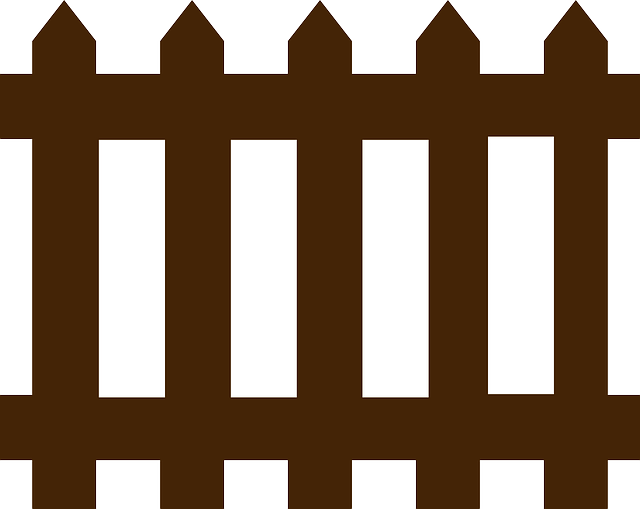Maintaining your New Bedford home’s privacy fence is essential for both aesthetics and functionality. This guide provides comprehensive tips tailored to the unique needs of New Bedford homeowners. From understanding the material and seasonal care to identifying common damage, you’ll learn how to ensure your fence serves as a robust barrier and elegant addition to your outdoor space. By following these expert recommendations, you can extend the lifespan of your privacy fence and keep it looking its best throughout the year.
- Understanding Your Privacy Fence's Material and Needs
- Regular Cleaning and Maintenance for Optimal Lifespan
- Inspecting for Damage: Common Issues to Look Out For
- Seasonal Care: Winterizing and Summer Maintenance Tips
- Professional Help vs DIY: When to Seek Expert Assistance
Understanding Your Privacy Fence's Material and Needs
Privacy fences are an essential addition to any New Bedford homeowner’s outdoor space, offering a sense of seclusion and security. To maintain their effectiveness, it’s crucial to understand the material your fence is made from and its specific needs. Common privacy fence materials include wood, vinyl, and metal. Each has unique requirements for upkeep, with wood needing regular staining or painting, vinyl requiring minimal maintenance beyond cleaning, and metal fences often calling for occasional rust prevention treatments.
Beyond material considerations, understanding your fence’s structure and design is key. Look for signs of rot, warping, or loose panels in wooden fences. Vinyl fences should be checked for cracks or chips, while metal fences may require adjustments to hinges or brackets over time. Regular inspection allows for prompt repair, ensuring your privacy fence remains functional and attractive throughout the year.
Regular Cleaning and Maintenance for Optimal Lifespan
Regular cleaning and maintenance are key to extending the lifespan of your privacy fence. Start by sweeping or brushing away any debris, leaves, or grass clippings that may accumulate on the fence’s surface. This simple step prevents blockages in drainage holes (if applicable) and keeps the fence looking neat.
Use a soft-bristled brush or garden hose to gently clean the fence, removing any built-up dirt or stains. Avoid using harsh chemicals, as they can damage the fence’s finish. After cleaning, inspect it for any signs of wear, rot, or damage. Regularly apply a suitable wood preservative or sealant to protect the fence from the elements and prolong its life.
Inspecting for Damage: Common Issues to Look Out For
Regularly inspecting your privacy fence is an essential part of maintenance, as it allows you to identify and address potential issues early on. New Bedford’s weather can be harsh, with snowy winters and humid summers, which can take a toll on outdoor structures. Look out for common problems like rot or mold, especially in wooden fences, caused by prolonged exposure to moisture.
Cracks, splits, or warping in the fence panels are other signs of damage. These issues could indicate structural weakness and may require immediate attention to prevent further deterioration. Rusted or corroded metal components, such as hinges or posts, should also be checked, as they can compromise the fence’s stability and security.
Seasonal Care: Winterizing and Summer Maintenance Tips
Seasonal Care: Winterizing and Summer Maintenance Tips
During winter, New Bedford’s colder temperatures and potential snowfall require specific care for your privacy fence. Before winter sets in, clean and inspect your fence thoroughly. Remove any debris or leaves that could accumulate and cause damage over time. Consider applying a protective coating or sealant to safeguard the fence from freezing and thawing cycles, which can lead to cracks. Additionally, ensure all hardware is secure and well-oiled to prevent rust.
In summer, the warmer weather and increased rainfall necessitate regular cleaning and maintenance. Power washing your fence twice a year—once in spring and once in late summer—helps remove built-up dirt and grime. Keep an eye out for signs of rot or damage and address them promptly with suitable repairs or replacement parts. Regular trimming around the fence line also ensures a neat appearance and prevents overgrowth that could affect the structure’s integrity.
Professional Help vs DIY: When to Seek Expert Assistance
When it comes to maintaining your New Bedford property’s privacy fence, deciding between professional help and a DIY approach depends on several factors. For complex fence structures or extensive repair needs, enlisting the expertise of professionals is often the best course of action. These experts have the specialized tools, knowledge, and experience required to handle intricate tasks like structural repairs, replacement parts, and ensuring your fence complies with local regulations.
Professional fence maintenance services offer peace of mind, especially when dealing with heights or working with electrical components for gates. They can also provide valuable advice on materials and designs suitable for your climate and local conditions. However, if your fence is relatively simple, newer, and requires only routine cleaning and minor repairs, a DIY approach could be cost-effective and satisfying for those who enjoy hands-on projects.
